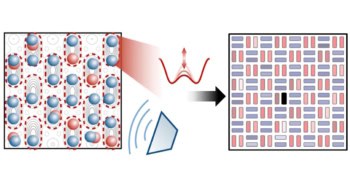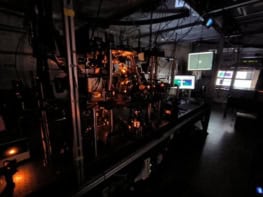The behaviour of electrons in a metal is often compared to that of water in a pool. An empty pool is like a material that has all of its electrons removed. As electrons are “poured” into the metal, they first occupy the lowest energies available – the bottom of the pool – and eventually fill up to the Fermi energy, the top of the pool. At this point we no longer discuss electrons but quasiparticles. These are electrons that have modified properties due to their interactions within the material.
Waves in a pool can be excited, and their properties will depend on the depth of the water. Similarly in a metal, quasiparticles behave like waves that have a material-dependent dispersion relation between their energy and their wavevector, which specifies their direction and wavelength. This simple analogy also hints at an indirect method of measuring the dispersion relation of a metal, and hence the myriad of properties that depend on it.
Read this article in full in the June issue of Physics World. The article is by Eric Hudson in the Department of Physics at Massachusetts Institute of Technology.



